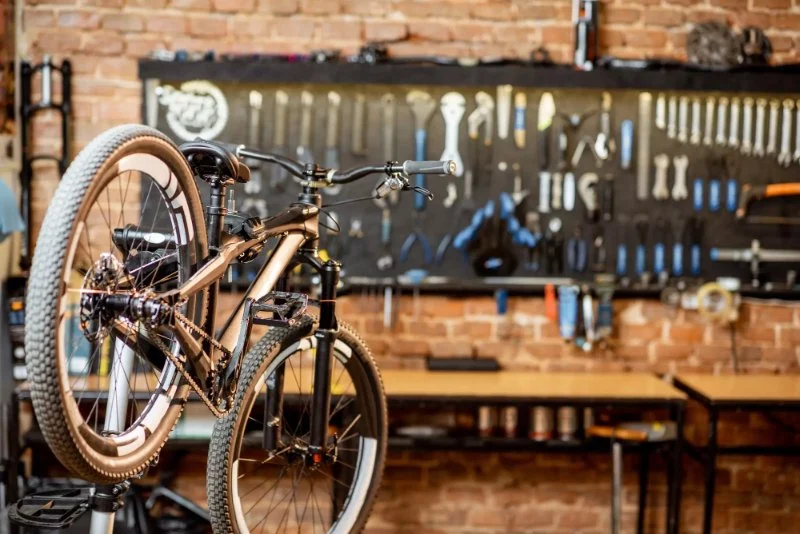
- 1. Understanding the Annual Cost of Bike Maintenance
- 2. Routine Maintenance Expenses
- 3. Replacements and Repairs Over Time
- 4. The Hidden Costs: Tools, Accessories, and Lubricants
- 5. Professional Tune-Ups vs. DIY Maintenance
- 6. Annual Budget Breakdown for Bike Maintenance
- 7. Saving Tips and Recommendations
1. Understanding the Annual Cost of Bike Maintenance
Many cyclists underestimate how much it truly costs to maintain a bike each year. While bikes are an affordable and eco-friendly mode of transportation, regular upkeep is essential for performance, safety, and longevity. The annual maintenance cost depends on factors such as bike type, riding frequency, and terrain.
On average, the yearly cost to maintain a standard bike ranges from $100 to $500, while high-performance road or mountain bikes may require $500 to $1,000 per year. Proper maintenance helps avoid costly repairs in the long run, ensuring smoother rides and a longer lifespan for your equipment.
2. Routine Maintenance Expenses
Regular maintenance tasks form the foundation of bike care. These small but essential services keep your bike in optimal condition and prevent bigger issues. Common recurring costs include:
Chain Cleaning and Lubrication: Chains should be cleaned and lubricated every 100–150 miles, costing around $20–$40 annually if done professionally or under $10 if done at home.
Tire Inspection and Inflation: Tires should be checked regularly for wear and pressure. Replacing worn tires can cost between $50–$100 per year depending on the type.
Brake Pads and Adjustments: Brake pads wear down with use. Expect to spend about $30–$80 per year on replacements and adjustments.
These basic tasks not only enhance ride comfort but also ensure your safety. Many cyclists find that performing routine checks at home can significantly reduce costs over time.
3. Replacements and Repairs Over Time
Beyond routine maintenance, certain parts of your bike will inevitably require replacement. These expenses can fluctuate based on how often and where you ride. Components like chains, cassettes, and tires wear down faster for mountain bikers or commuters in wet climates.
- Chain Replacement: Every 2,000–3,000 miles, costing $30–$70. - Brake Rotors or Calipers: Around $50–$150 depending on the model. - Wheel Truing or Replacement: $40–$200 annually, depending on wear and riding conditions.
These costs can add up quickly, which is why many riders budget for part replacements as part of their yearly maintenance plan.
4. The Hidden Costs: Tools, Accessories, and Lubricants
While most people focus on repairs and replacements, hidden costs such as maintenance tools and cleaning products also play a part in annual spending. Investing in quality tools can save you money in the long run, but they represent an upfront expense.
Items like multi-tools, tire levers, and chain checkers can cost $50–$150 initially. Lubricants, degreasers, and cleaning brushes can add another $30–$60 per year. Riders who choose to perform maintenance at home often recoup these costs quickly by avoiding shop labor fees.
5. Professional Tune-Ups vs. DIY Maintenance
One of the biggest decisions for cyclists is whether to handle maintenance themselves or rely on a professional mechanic. A basic professional tune-up typically costs between $75 and $125, while a full overhaul may reach $200–$300.
For casual riders, one or two professional tune-ups per year may be enough to keep the bike in great shape. However, experienced cyclists often prefer to learn basic maintenance techniques. Cycling Guider provides detailed resources and service recommendations to help you decide the best approach for your needs and budget.
6. Annual Budget Breakdown for Bike Maintenance
To give you a clearer idea, here’s a general estimate of what an average cyclist might spend annually:
- Basic tune-ups and adjustments: $100–$150 - Replacements (chains, tires, cables): $150–$300 - Cleaning supplies and lubricants: $40–$60 - Tools and accessories: $50–$100 - Unexpected repairs: $50–$150
Estimated total annual cost: $200 to $600 for most riders. Enthusiasts with high-end bikes may see this number climb toward $1,000.
While this may seem like a significant investment, proper care ensures performance and longevity. Regular upkeep is far more economical than replacing an entire drivetrain or wheelset prematurely.
7. Saving Tips and Recommendations
To keep maintenance costs manageable, focus on prevention. Clean your bike regularly, store it indoors to avoid rust, and schedule minor tune-ups before major issues develop. Investing in high-quality components often saves money over time, as they require less frequent replacement.
Additionally, learning basic repair skills—such as fixing a flat tire or adjusting brakes—can drastically reduce annual costs. Many cycling communities and shops offer workshops to help riders become more self-sufficient. You can also explore recommendations and maintenance tools through Cycling Guider to make sure your bike stays in peak condition year-round.







 Bike Ride Sobe3.0 (100 reviews)
Bike Ride Sobe3.0 (100 reviews) Quadrini USA Electric Bikes4.0 (34 reviews)
Quadrini USA Electric Bikes4.0 (34 reviews) Wolf King E-Bike3.0 (18 reviews)
Wolf King E-Bike3.0 (18 reviews) Union Cycle Center4.0 (120 reviews)
Union Cycle Center4.0 (120 reviews) HOSPITAL DE BICICLETAS4.0 (131 reviews)
HOSPITAL DE BICICLETAS4.0 (131 reviews) Big Wheels LLC3.0 (3 reviews)
Big Wheels LLC3.0 (3 reviews) How to Teach Kids to Ride a Bike: A Step-by-Step Guide for Parents
How to Teach Kids to Ride a Bike: A Step-by-Step Guide for Parents Tips for Riding on Busy City Streets: Smart Strategies for Urban Cyclists
Tips for Riding on Busy City Streets: Smart Strategies for Urban Cyclists Best US National Parks for Mountain Biking: Ride Epic Trails Across America
Best US National Parks for Mountain Biking: Ride Epic Trails Across America Best Aero Helmets for Time Trials and Racing
Best Aero Helmets for Time Trials and Racing How to Clean and Lubricate Your Bike Chain Like a Pro
How to Clean and Lubricate Your Bike Chain Like a Pro 10 Must-Have Items for Long-Distance Cycling Trips
10 Must-Have Items for Long-Distance Cycling Trips